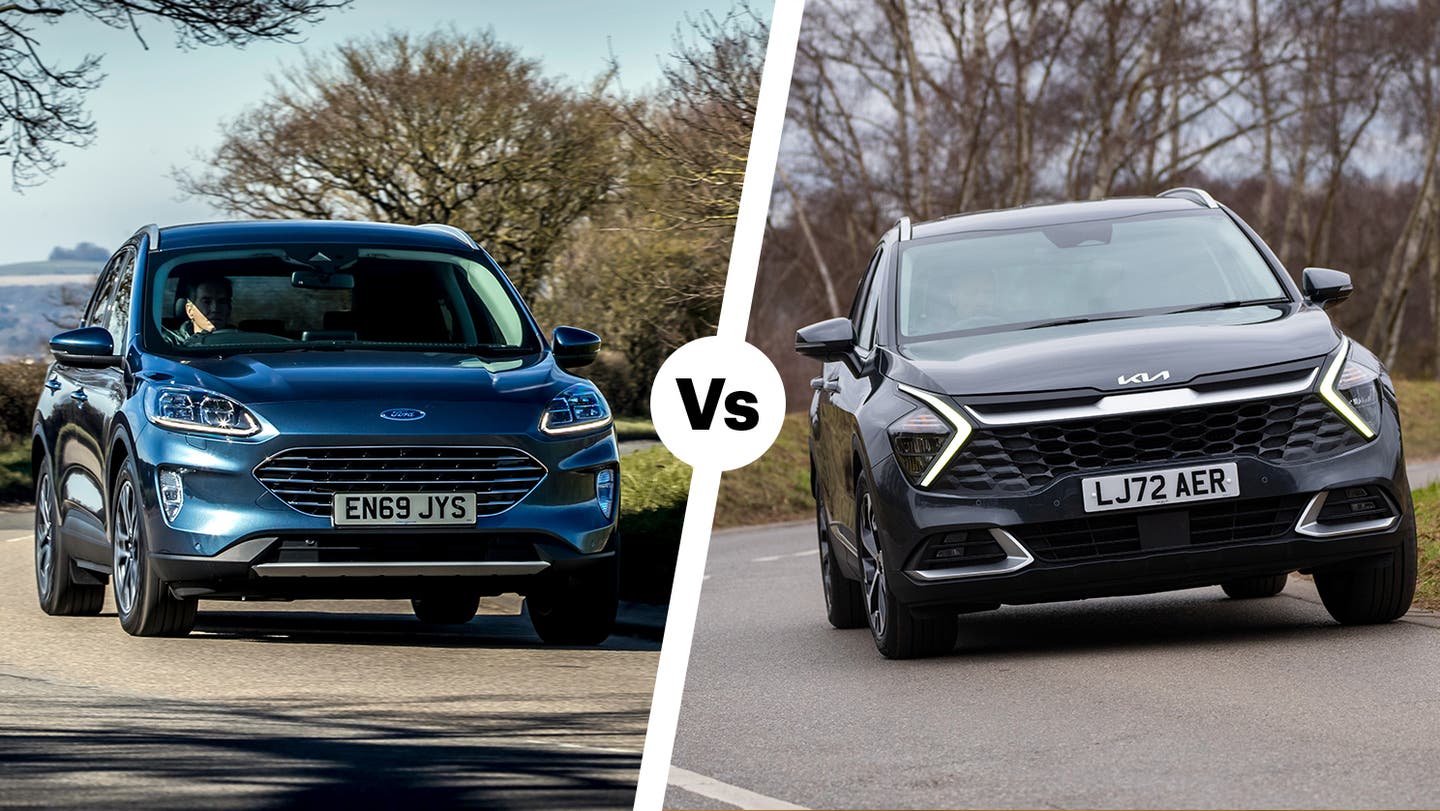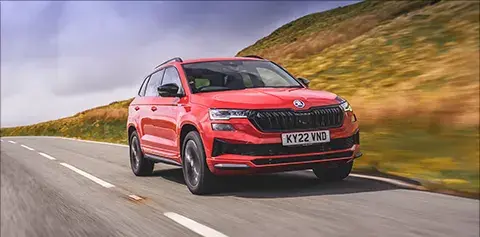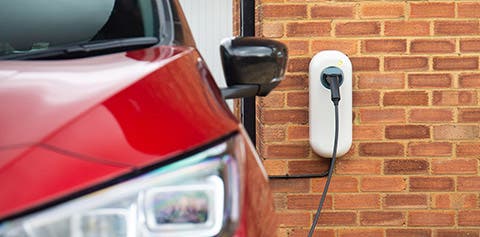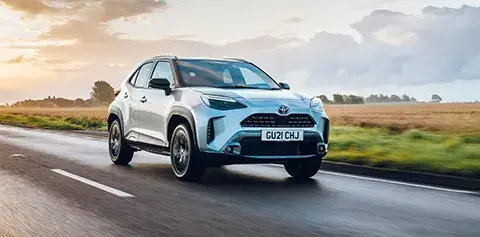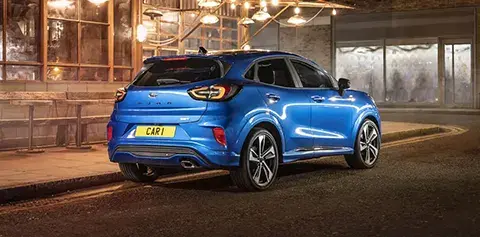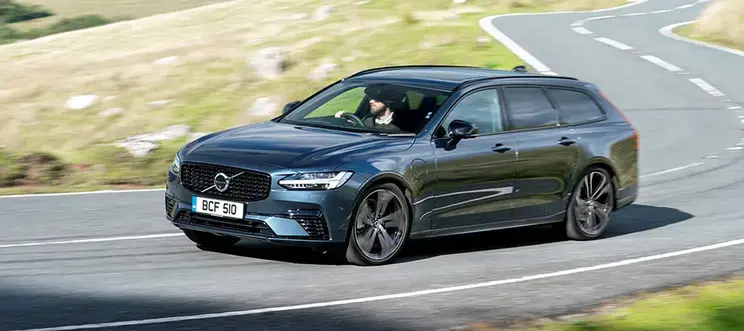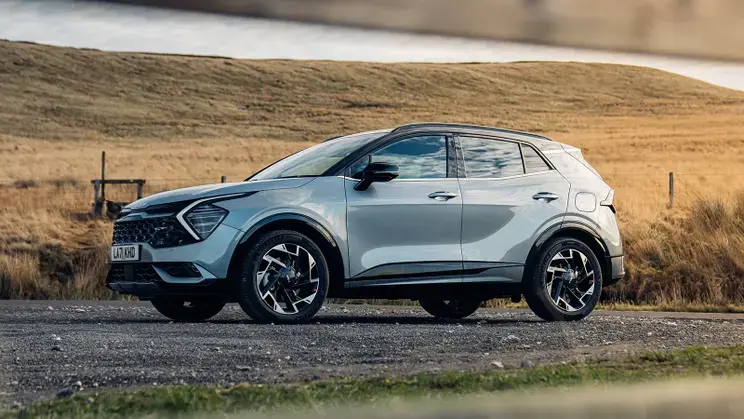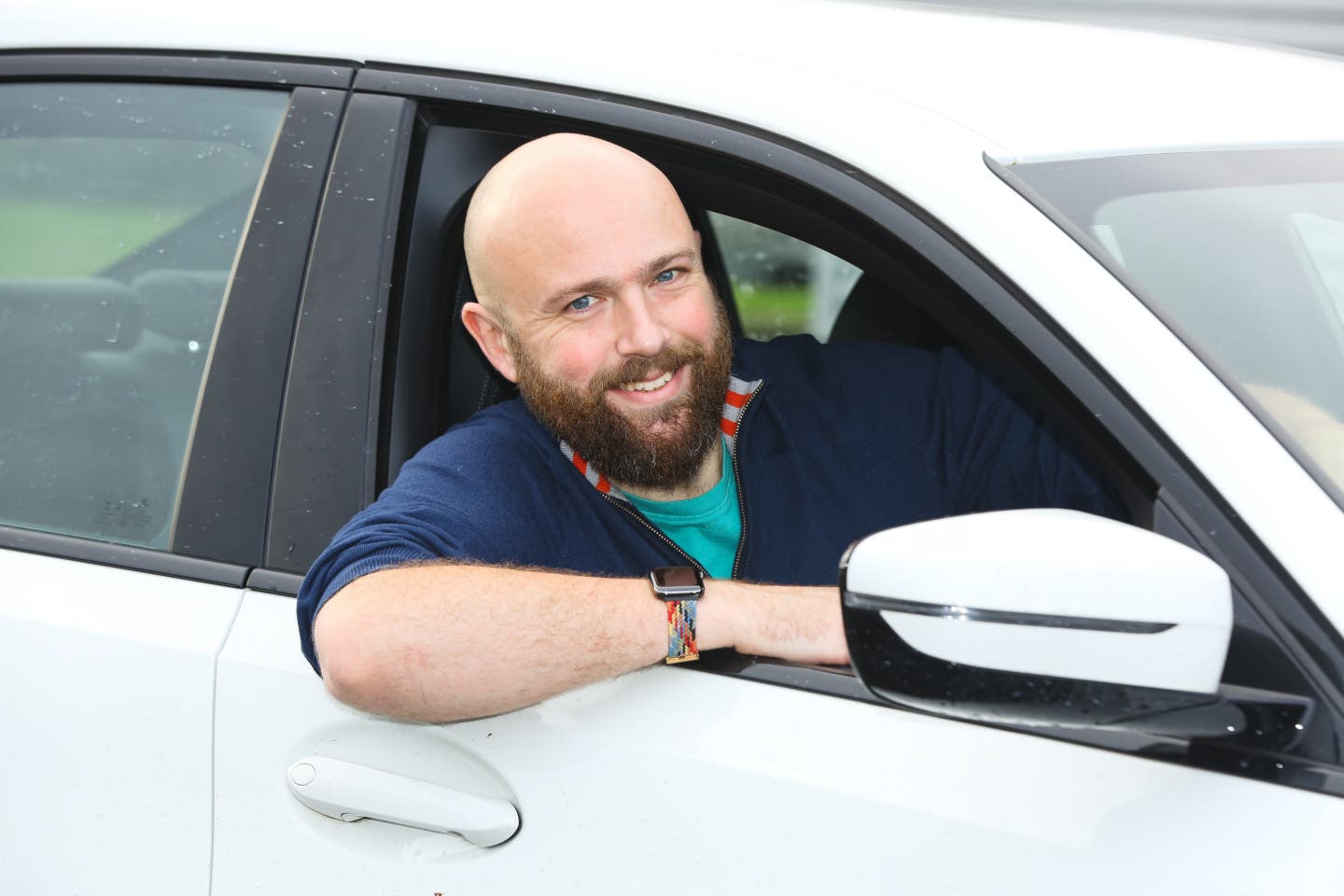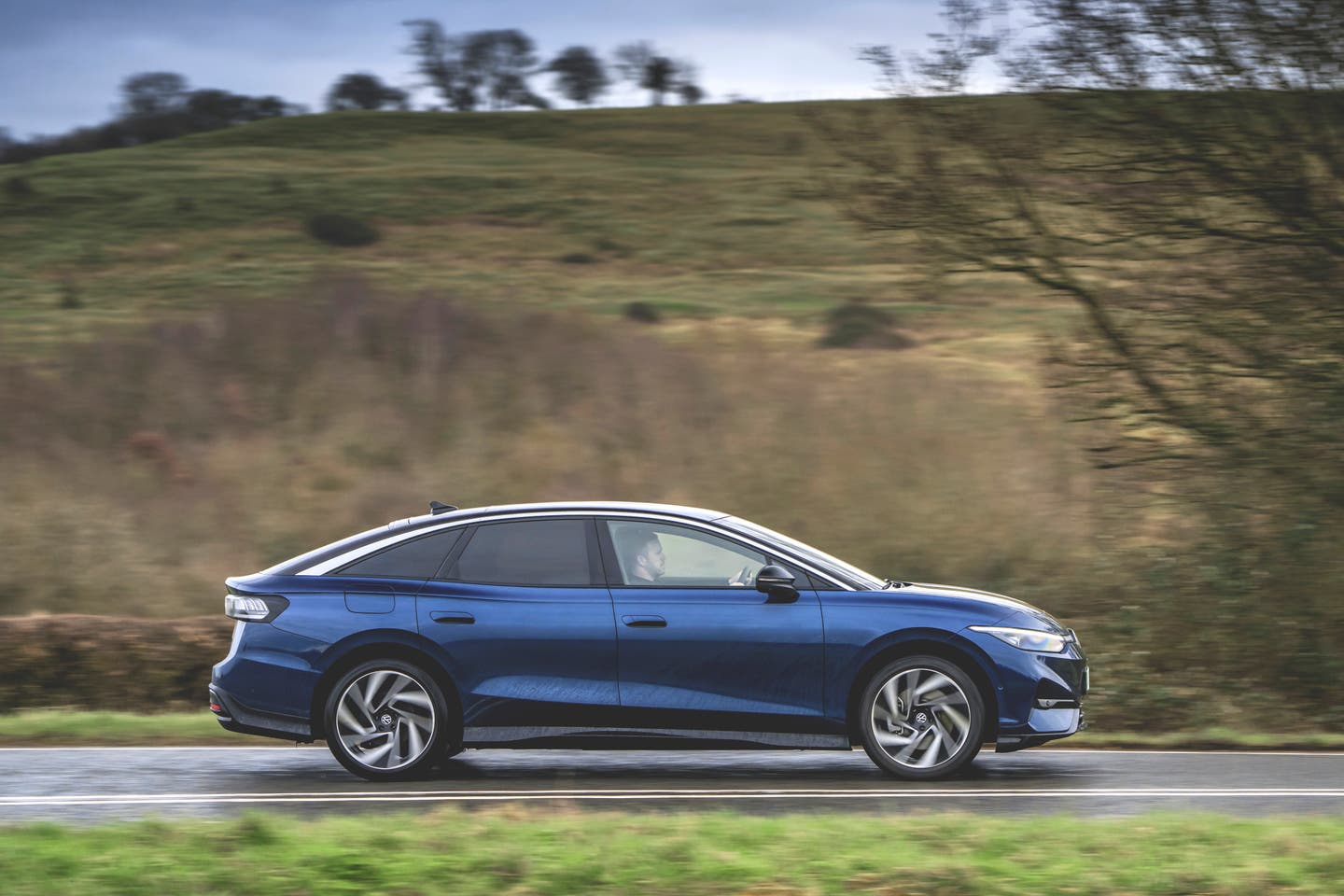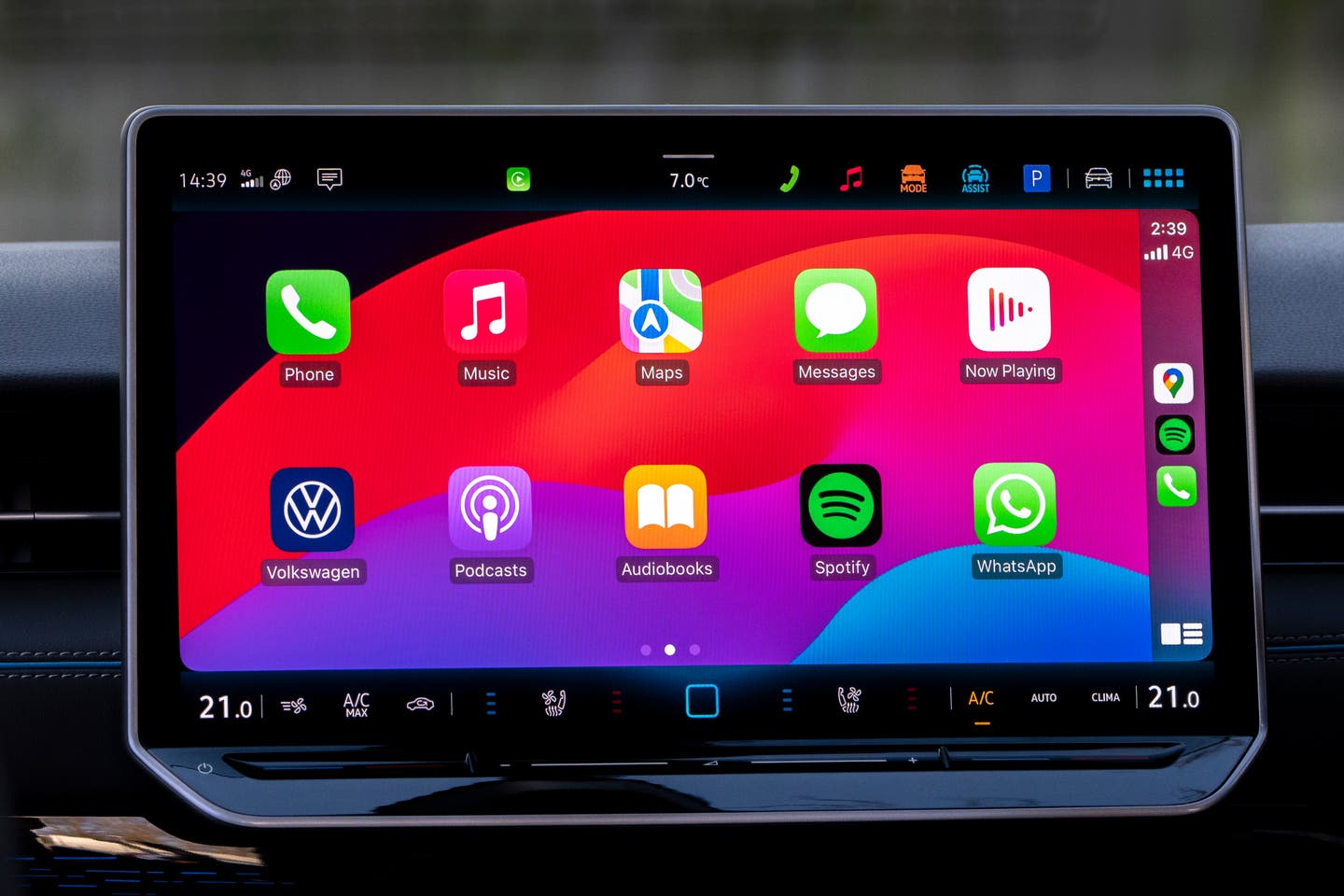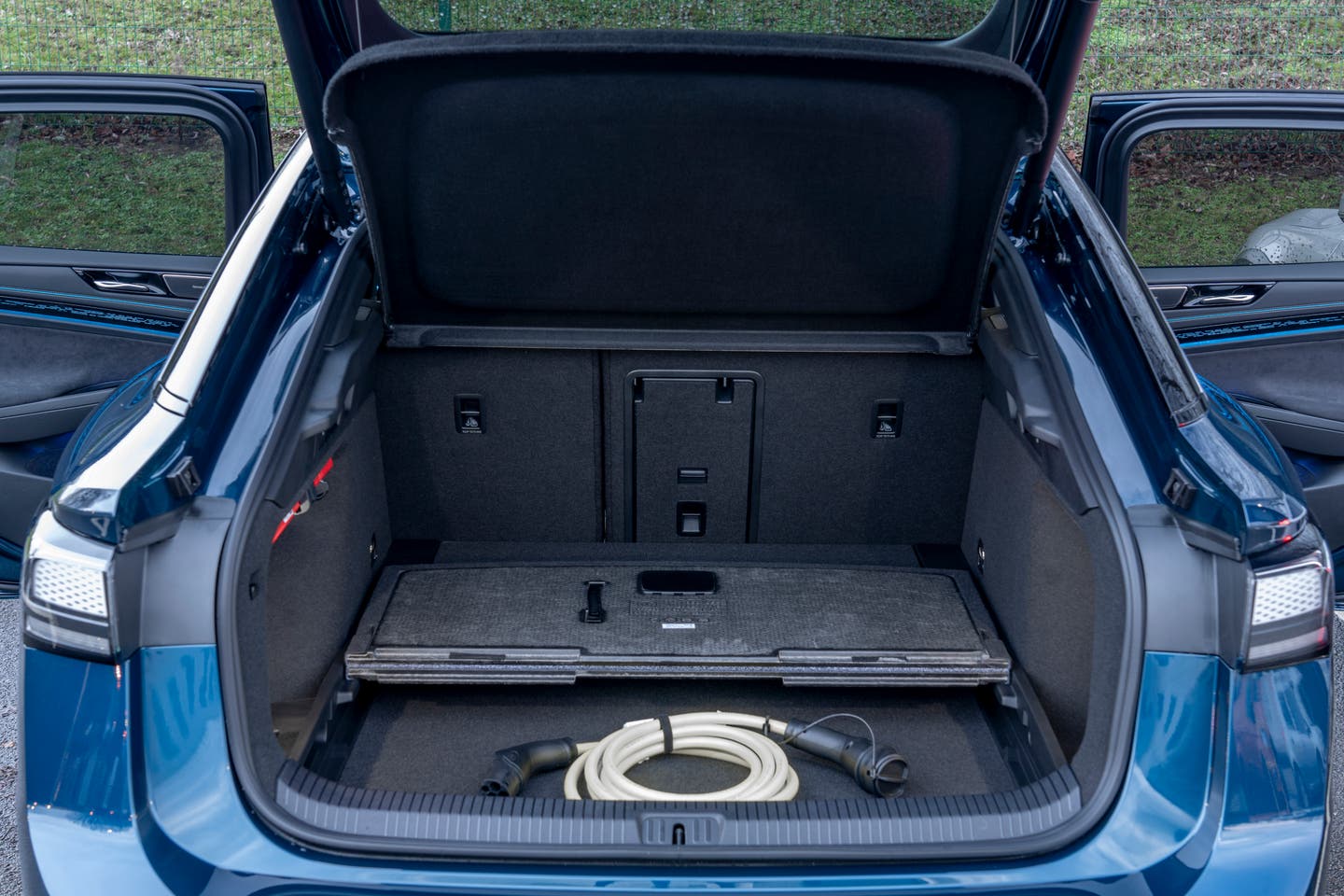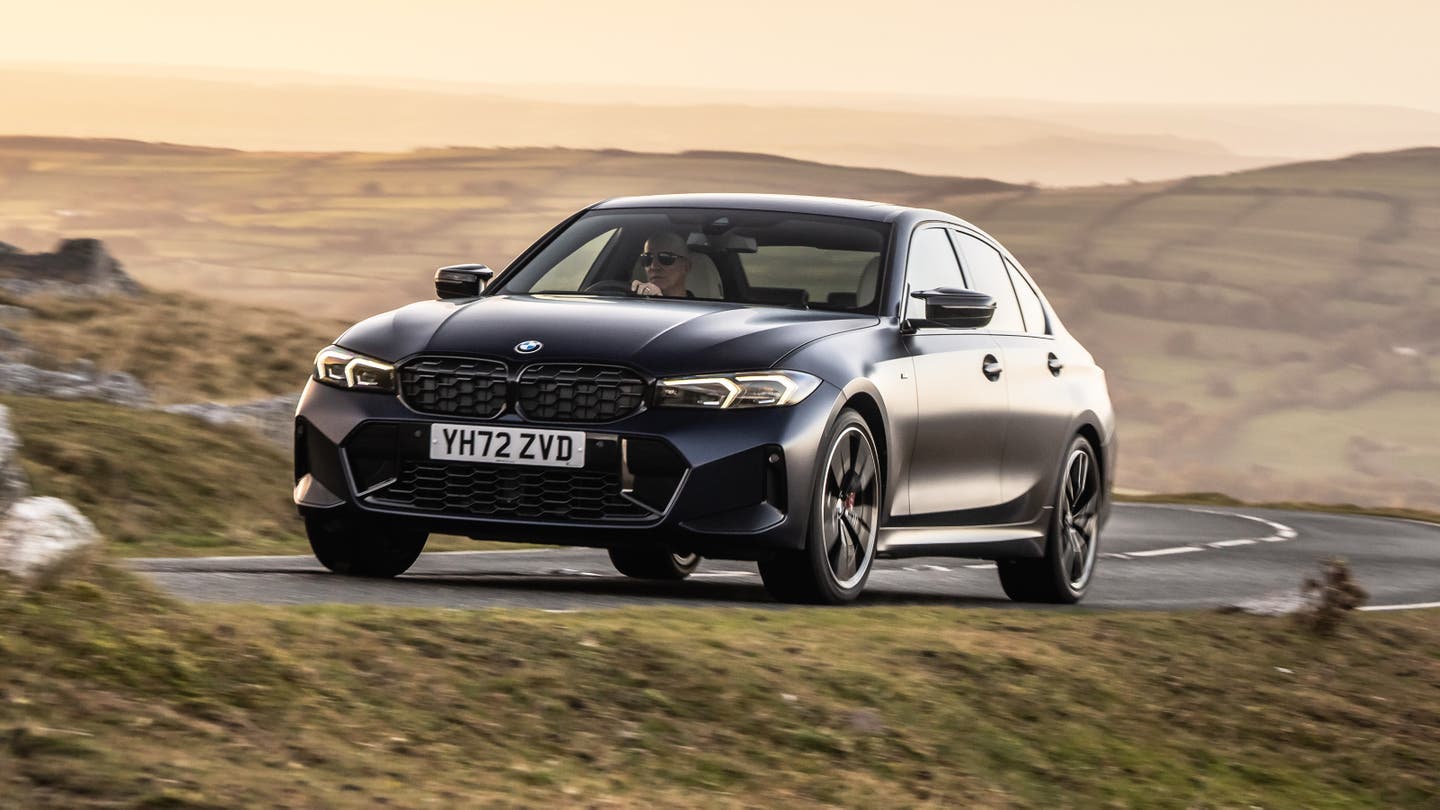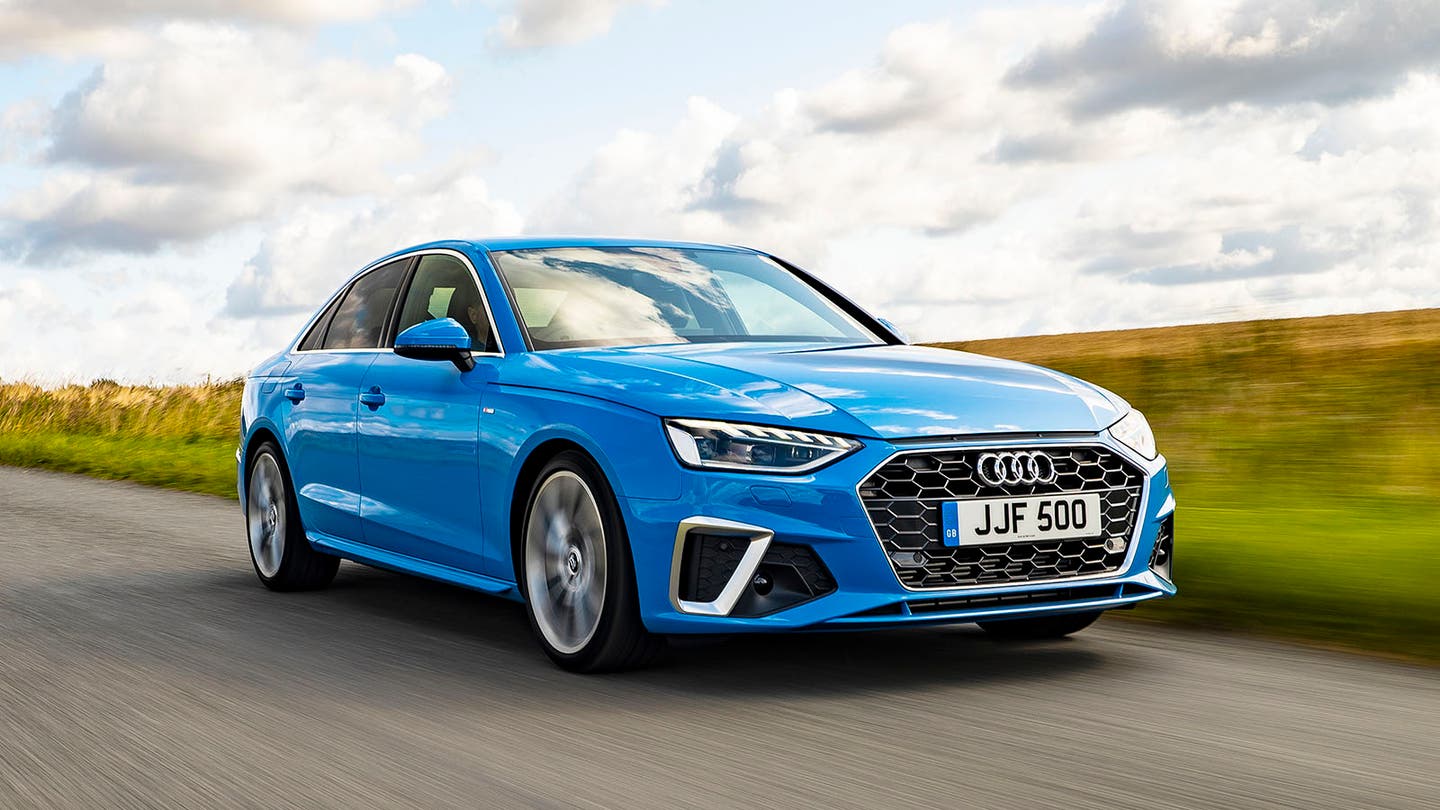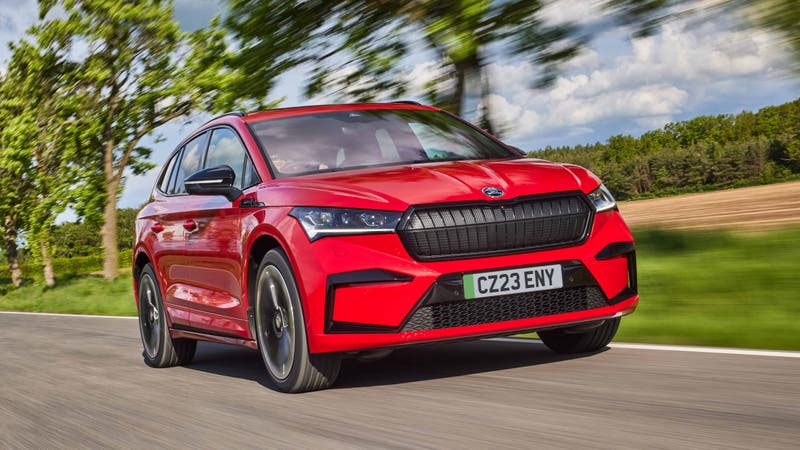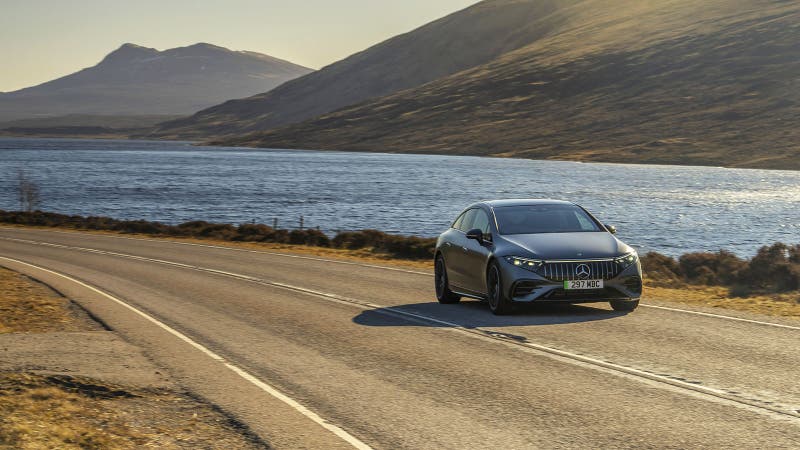
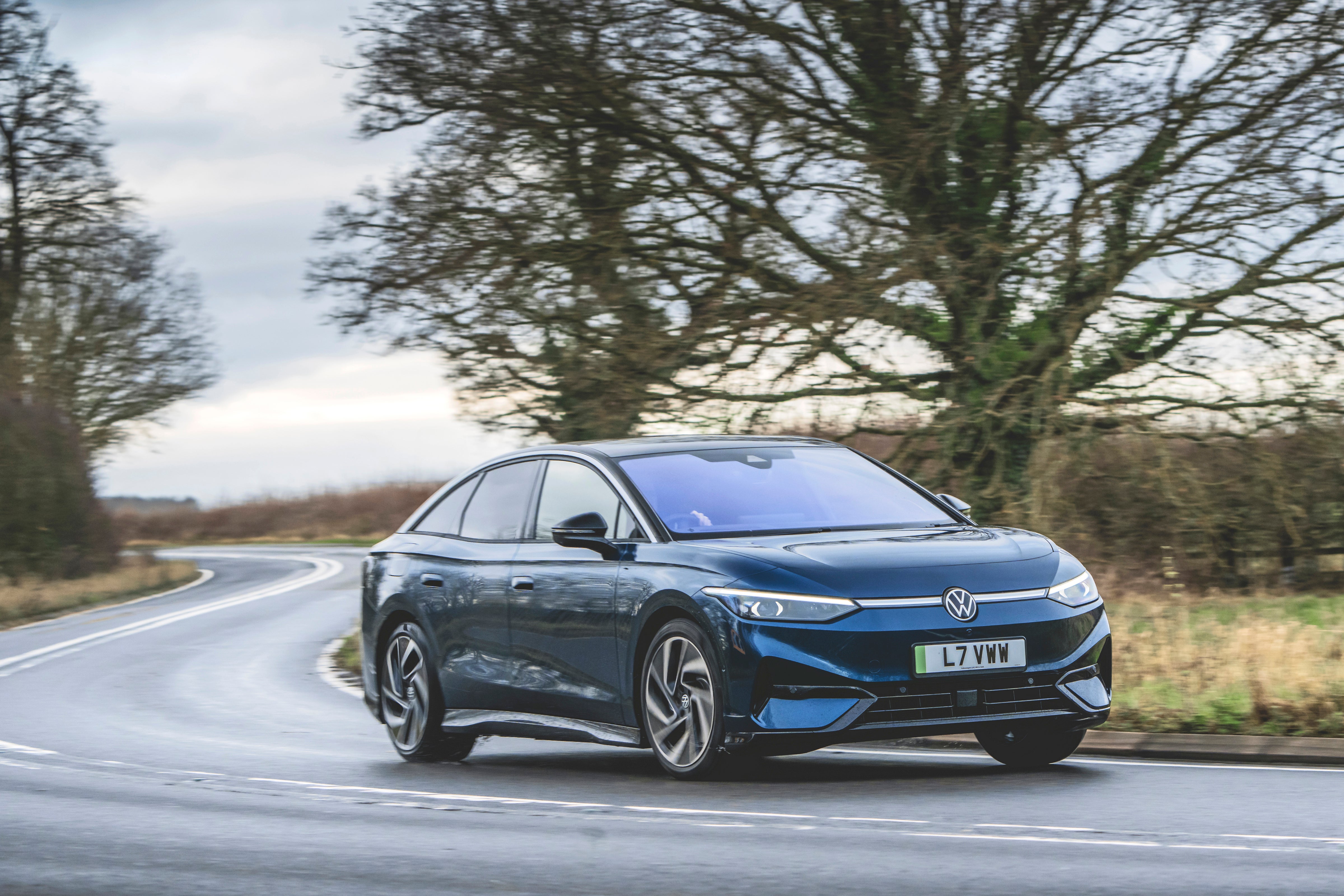
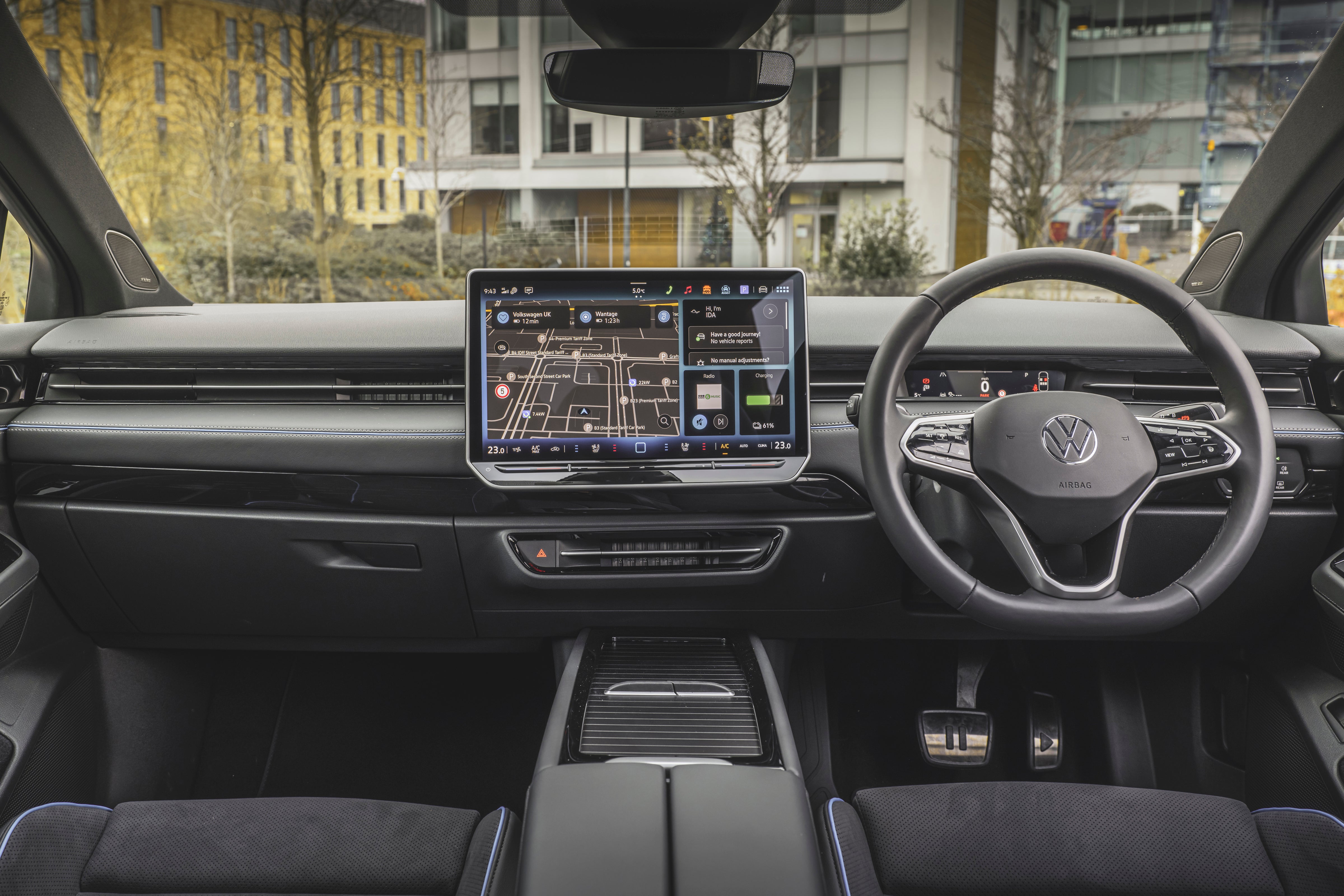
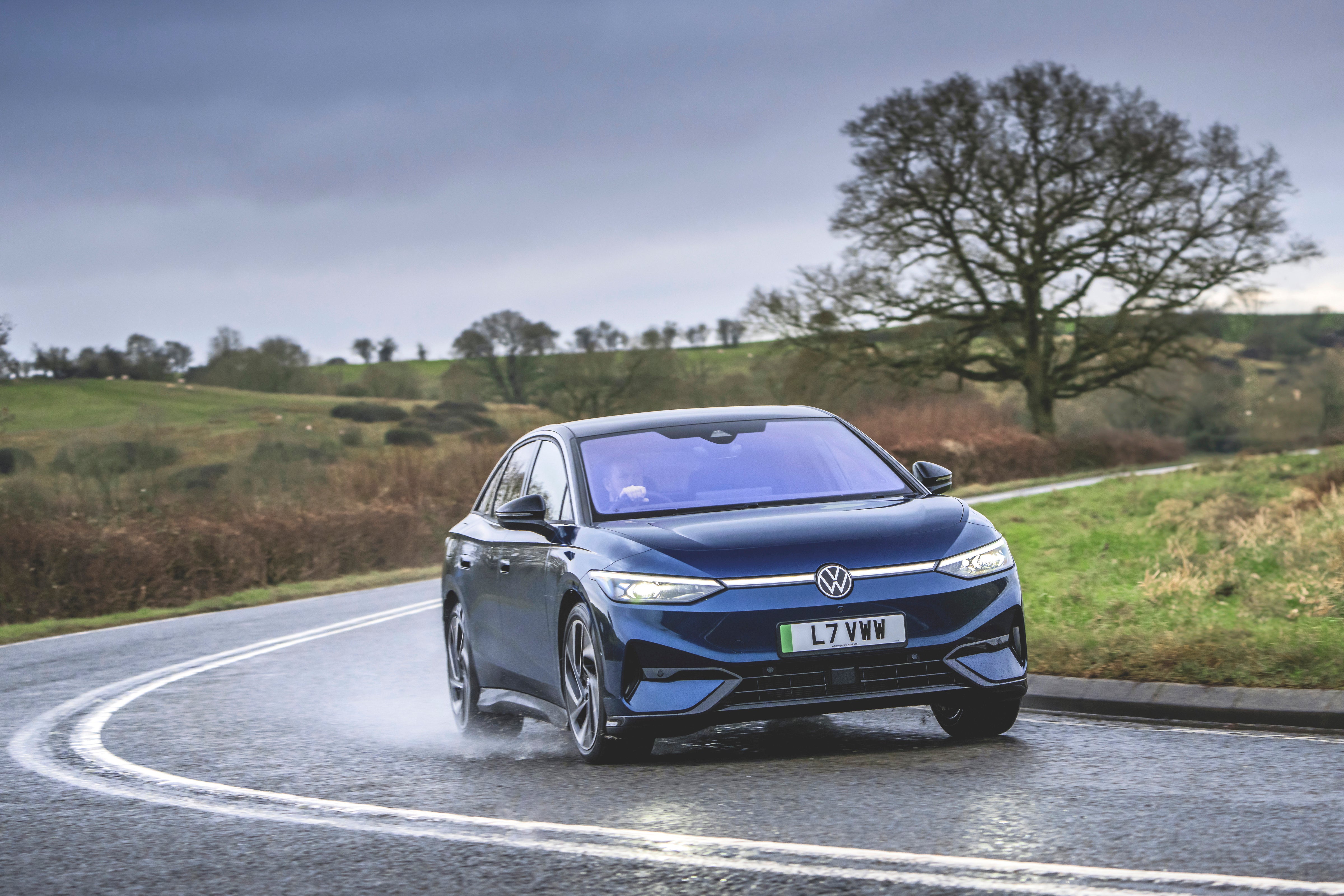
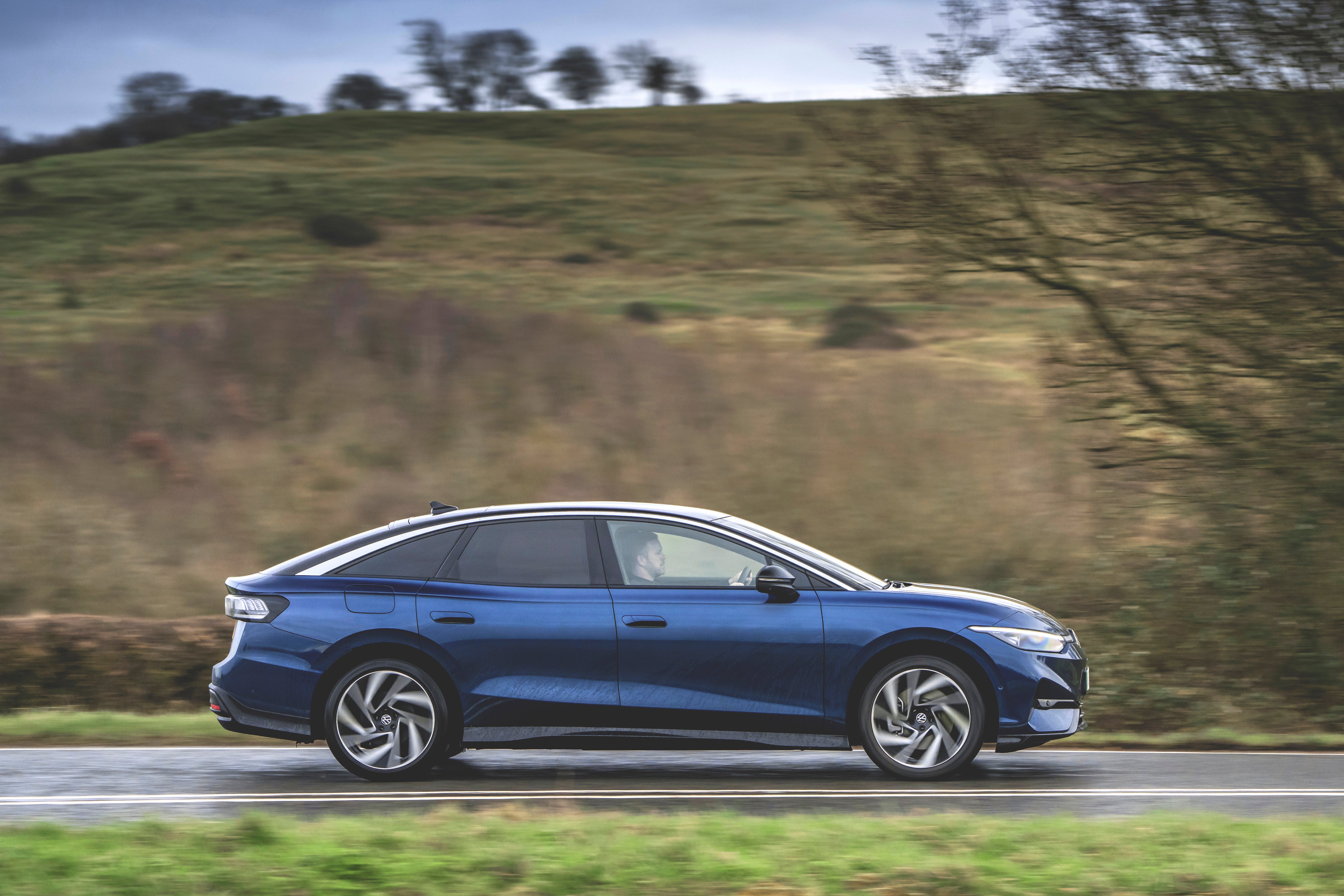
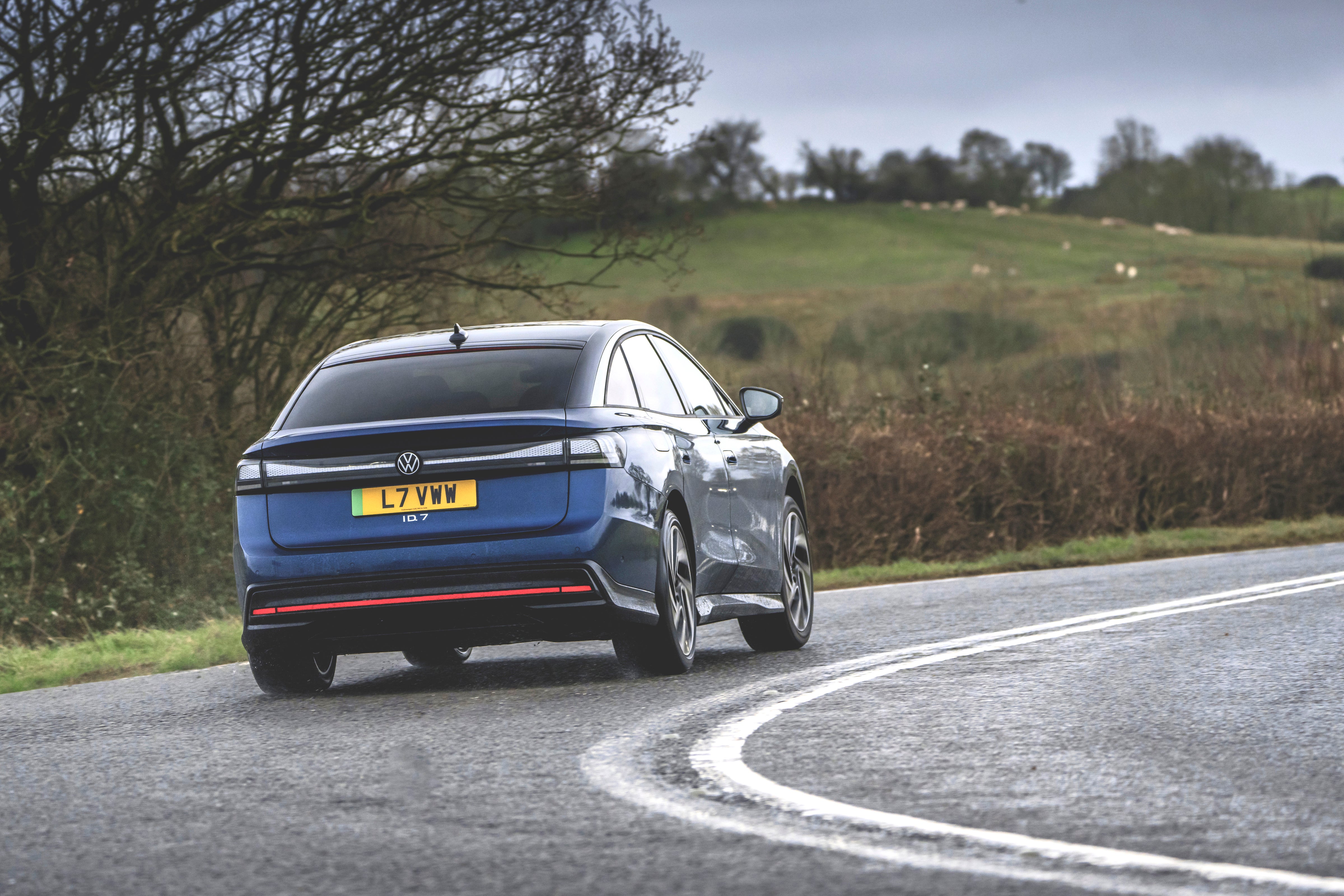
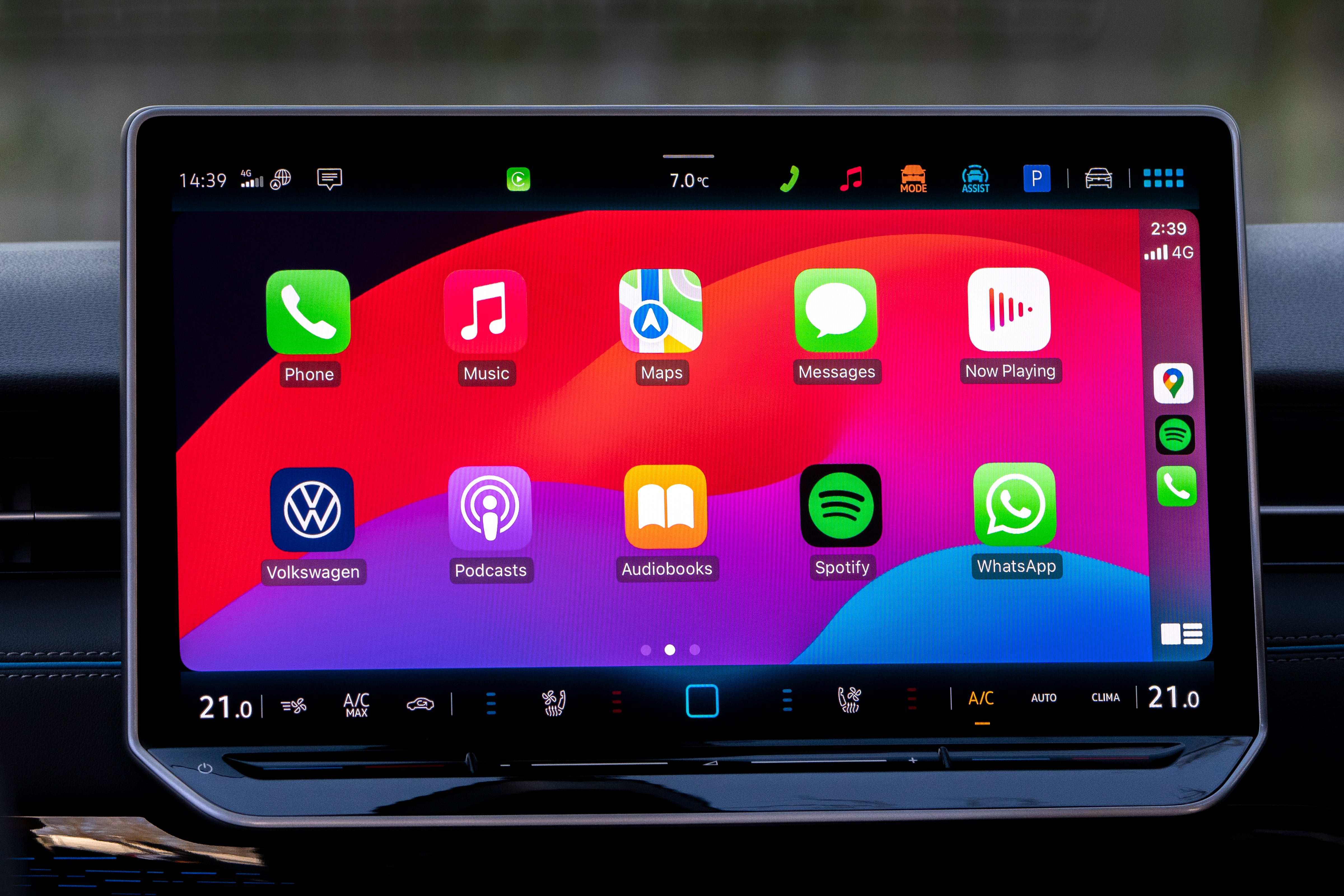
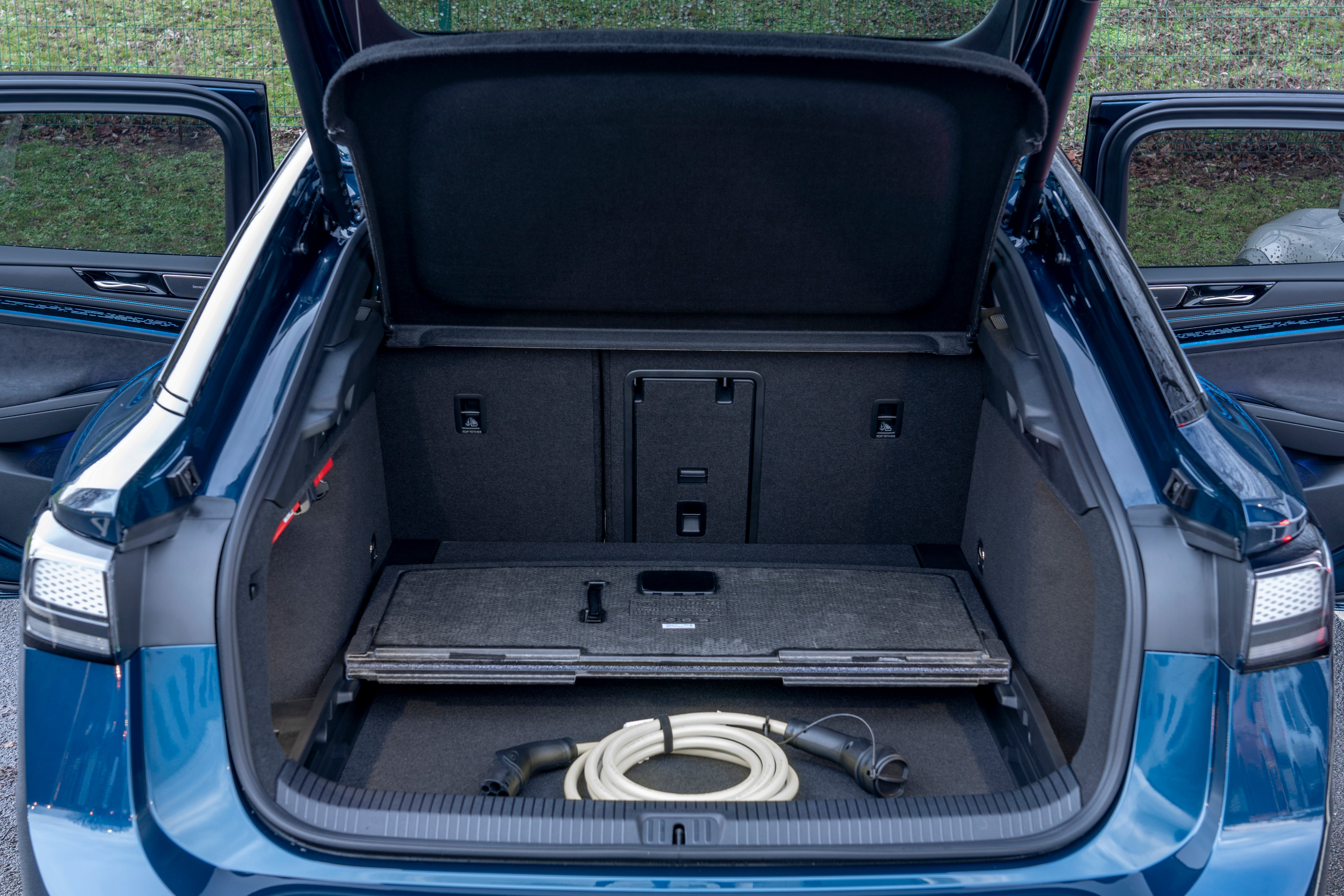
Volkswagen ID.7 review
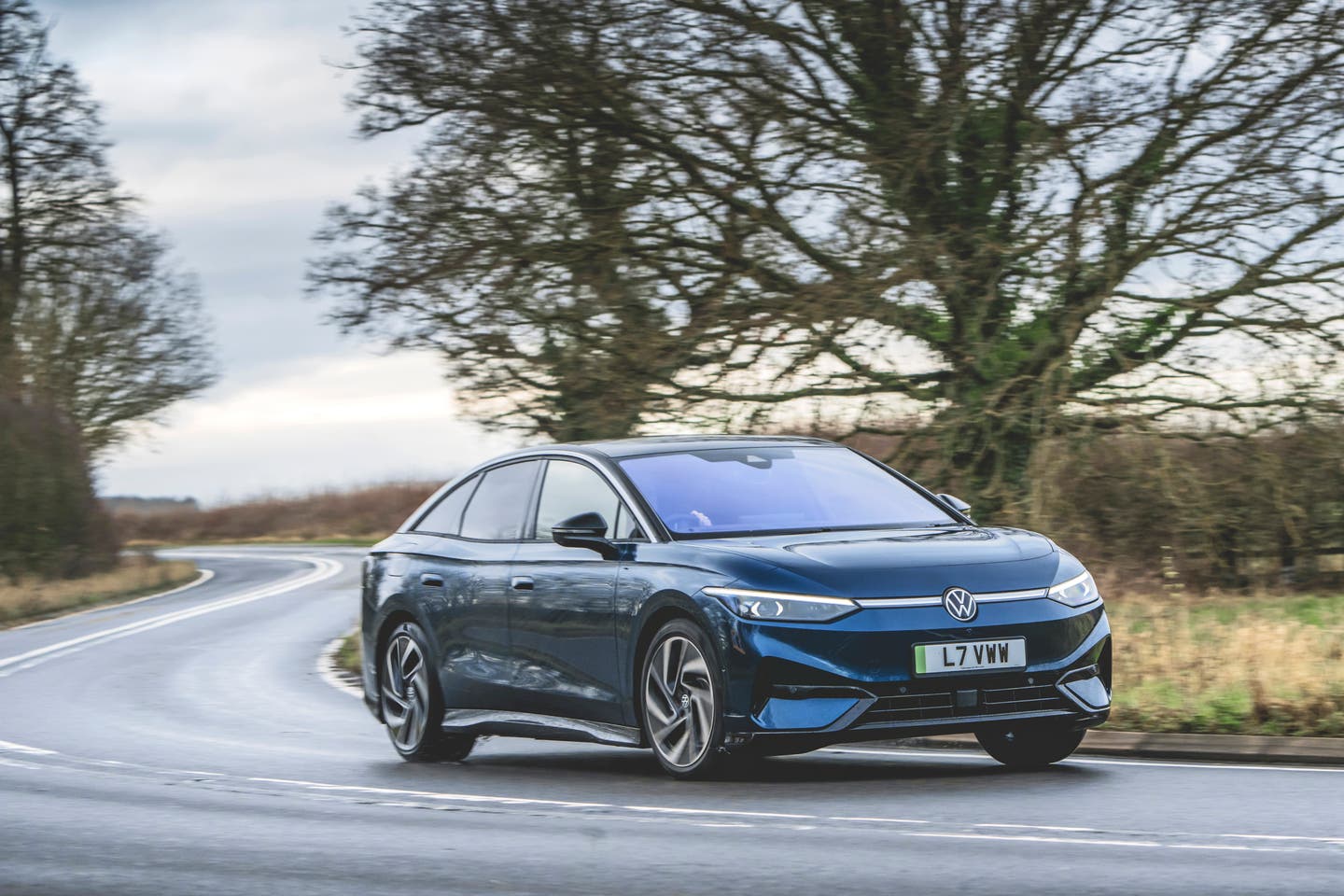
The Volkswagen ID.7 is a big electric saloon that rivals the likes of the Tesla Model 3 and Polestar 2. It's incredibly efficient, but is let down by slightly jiggly suspension.
Volkswagen's also using the ID.7 to showcase a substantially improved infotainment system and comfortable massage seats – both fitted as standard. A starting price north of £52,000 also means this isn't a cheap car.
- Impressive EV driving range
- Comfortable and high-tech cabin
- Roomy boot and rear seats
- Unsettled ride on bumpy roads
- Expensive
- So-so looks
Should I buy a Volkswagen ID.7?
If you're after a reasonably luxurious electric car but don't want the height or relative inefficiency of an SUV, then the Volkswagen ID.7 should be high on your shopping list.
It's designed to slip through the air like a snake through a cream cake, with flush-mounted door handles and a flowing saloon shape that maximises the range from its 77kWh or 86kWh battery pack options. Real-world range should around 320 miles from the smaller battery, and 400 miles from the larger one – Volkswagen claims 382 and 435 miles respectively.
While the ID.7's looks might be typically austere and perhaps a little drab, there are some stylish highlights – namely a sharp LED light strip across the nose of the car, with a similar effect at the rear.
Inside, you're treated to a huge infotainment screen and backlit temperature controls that largely fix the problems we've had in other recent Volkswagens.
Comfort is good thanks to all-new seats that'll massage you – even on entry-level ID.7s – but out on the road, we felt more of the Tarmac through our backsides than we'd have liked. The ID.7 can be hustled down a country road, but it's more at home loping along serenely, making the most of that slippery shape to eke out the miles.
Overall, it's a very good EV, albeit one that can't compete with the Polestar 2 on style, nor the Tesla Model 3 on price. It beats both cars for electric range however, and being a physically larger car it has a bigger boot and more room for your passengers.
Interior and technology
While the ID.7 looks like a low-slung saloon, the roofline is actually reasonably high – you won't be banging your head as you hop in or check your blind spots, which is a problem we had with the similarly sized Hyundai Ioniq 6. The only ergonomic quibble we have with the ID.7 is a driver's seat that won't drop down low enough to really feel as if you're sitting 'in' the car rather than on it.
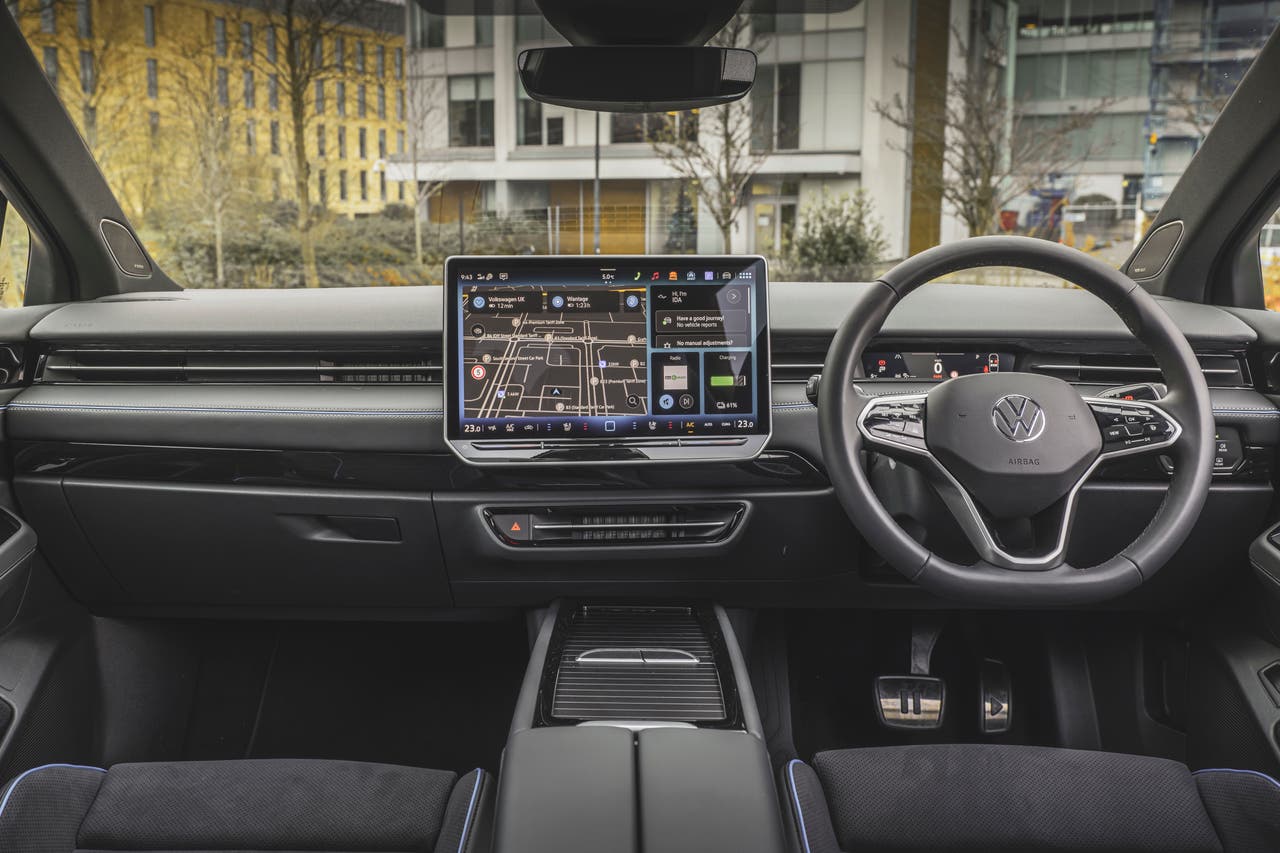
Otherwise, the ID.7's cabin is decently comfortable and spacious, if a bit dark without the optional sunroof that can turn opaque at the press of a button. Volkswagen's made a song and dance about the front two seats, which are an all-new design for the German brand, and include massage and heating functions as standard on all models. The seats themselves feel nice and soft while still being supportive enough, and you can choose your massage pattern and intensity using the rather brilliant 15-inch touchscreen infotainment system.
This new infotainment system is logically laid out and powered by a fast processor, so you're never left waiting for it to respond to your prods and pokes. You can add customised shortcuts to the top of the screen – useful for being able to turn off the mandatory speed-limit warning bong in two prods of the display.
Wireless Apple CarPlay and Android Auto are also included, and there's a standard-fit wireless phone charging pad in the centre console. Our only real complaint about the infotainment system is that the voice assistant (called IDA), triggers very easily during normal conversation with your passengers. A few choice Anglo Saxon phrases will send it scurrying back into its digital den.
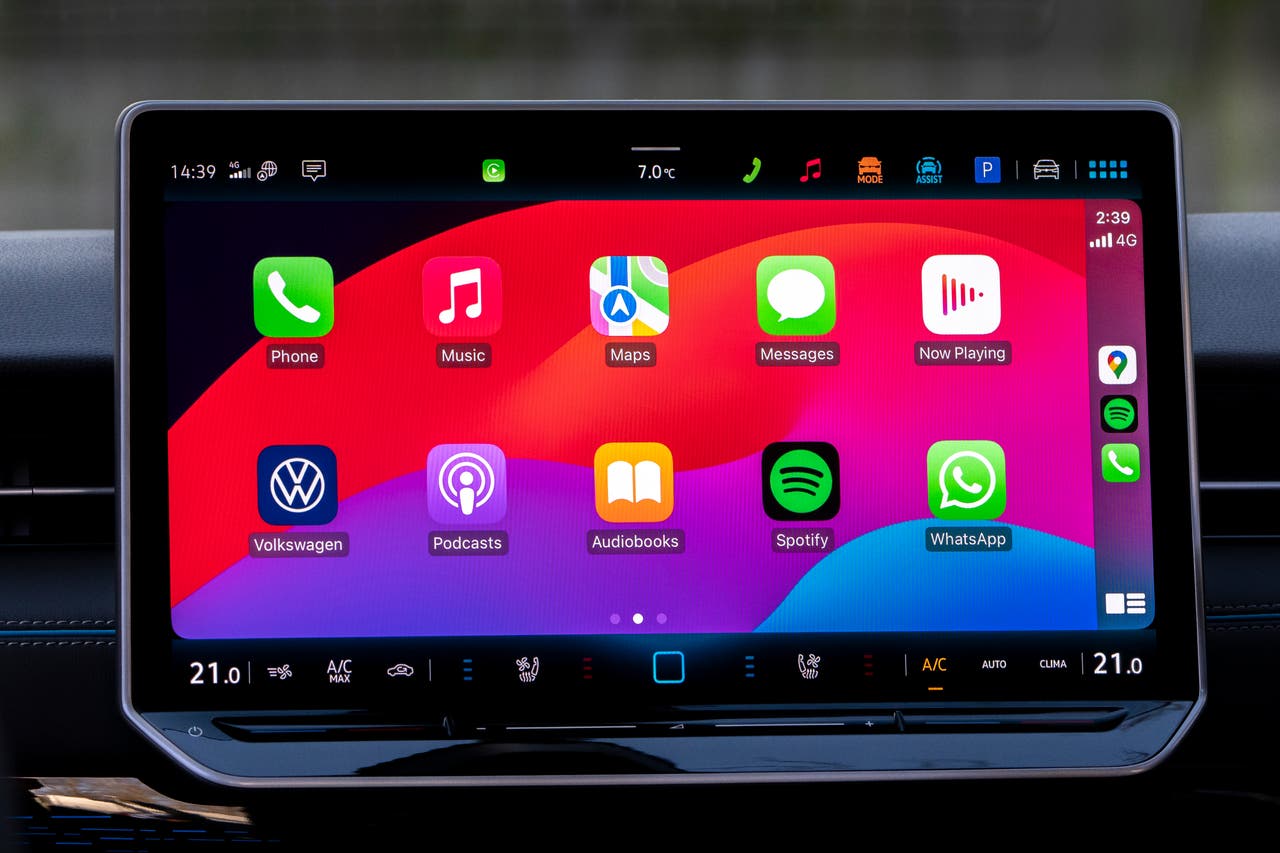
Less visually impressive is the small driver's display. There's no cinema-like screen behind the steering wheel – instead, there's a small screen that shows the basics such as speed, driving range remaining, battery charge and the current speed limit. Luckily, this is bolstered by a standard-fit head-up display, which not only projects your sat-nav directions onto the windscreen but uses an augmented reality effect to flash up 'turn here' arrows when you approach a junction. It'll also highlight the road markings should you start drifting out of your lane.
We were quite impressed by the entry-level eight-speaker sound system, which uses a subwoofer to lend some extra bass oomph to your music. Music aficionados might want to opt for the upgraded 14-speaker Harman Kardon setup though.
Practicality
At 4.93 metres long, the ID.7 is a big car – it's even longer than a Passat Estate. This means your passengers get acres of knee room, and the rear seats are reclined at a pleasing angle that encourages nodding off. The rear windows also deserve a mention because they roll all the way down, so back-seat passengers can stave off any car sickness.
Less good is rear-passenger foot room. While we managed to get our size 11s under the front passenger seat with it in its lowest position, it was a bit of a squash and a squeeze thanks to the car's battery pack raising the floor.
Rear-seat passengers can stay charged thanks to a pair of USB-C sockets on the back of the centre console, plus middle-seat occupants have a flat floor to rest their trotters on and a reasonably wide middle seat.

Boot space is a strong point for the ID.7 too – it measures 532 litres, and stretches back far into the cabin, making it ideal for longer suitcases. It's not that deep though, and there's only a 10cm-deep tray under the boot floor which you'll likely use for your charging cables, given there's no frunk storage on the ID.7 – in common with Volkswagen's other electric models.
Engines and performance
You can get the ID.7 with one of two battery packs. Pro models have a 77kWh item which is good for 382 miles of theoretical range, though we saw 330 miles from a full charge with an air temperature of 6C. Pro S models get a bigger 86kWh battery which takes theoretical range up to 435 miles, and can fast-charge at 200kW as opposed to the small battery's 170kW maximum.

We drove the rear-wheel-drive model with 285hp, which allows for a 0-62mph time of 6.5 seconds. Acceleration is rapid, and there's always plenty of oomph on tap for overtakes at 60mph. A more powerful dual-motor ID.7 GTX is on the way which will likely drop the 0-62mph time closer to five seconds, but we can't really see the need for more power in a car that's happier cruising than carving corners.
Driving and comfort
Speaking of corners, the ID.7's handling is assured and grippy, but the suspension is reasonably soft and there's some body lean in the corners, which encourages you to drive it more like a luxury limo than a sports saloon. There's a satisfying sense of being pushed out of corners by the rear-wheel-drive setup and, even in monsoon conditions, we felt confident driving at the speed limit on twisty roads.
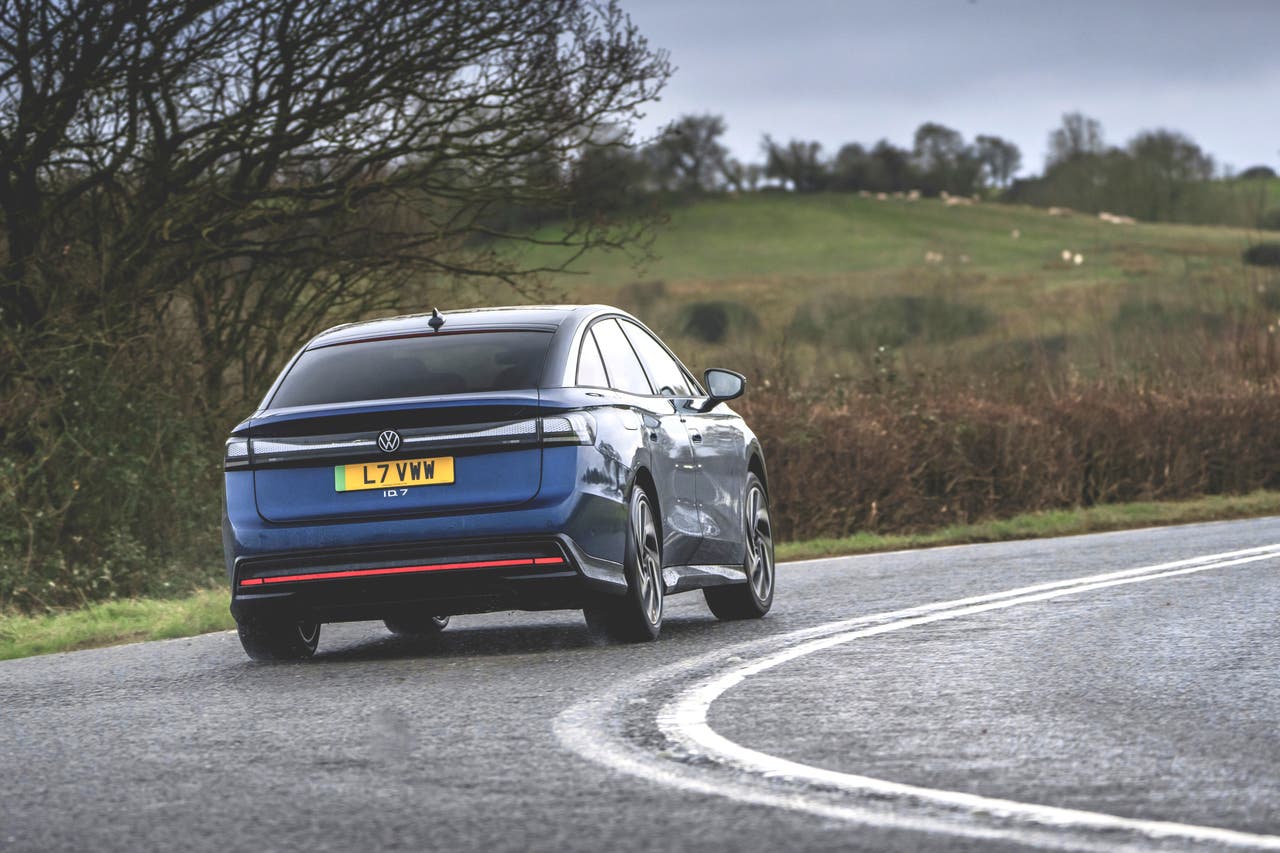
Despite having soft suspension, the ID.7 still transmits a distracting amount of bumps into the cabin, and there's not the 'magic-carpet' ride you might hope for. It also lollops over smoother bumps and doesn't really settle down unless the road is dead flat, leaving your head bobbing around more than we'd like.
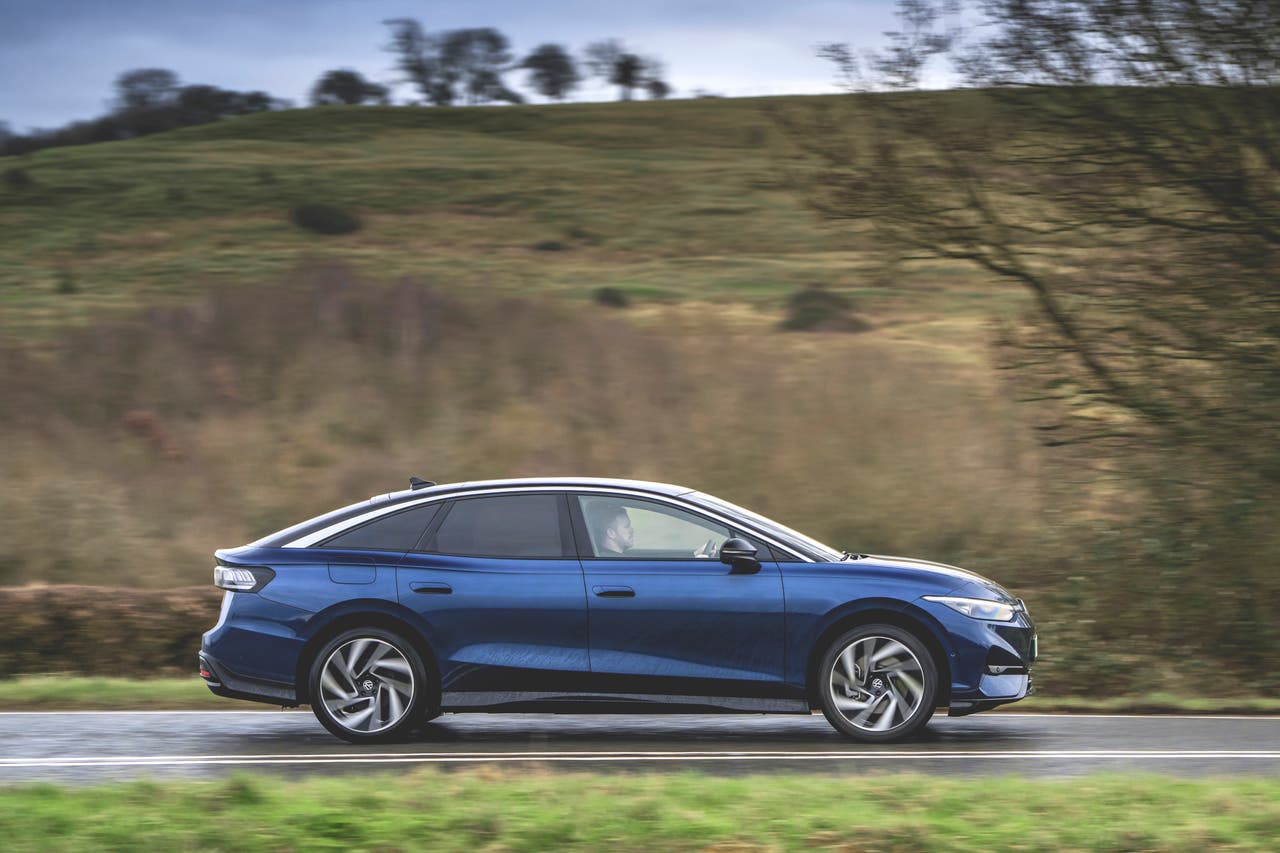
There's an option to fit adaptive suspension to the ID.7, which lets you adjust suspension firmness via the infotainment screen, but this still doesn't help the car settle down, which is a pity.

